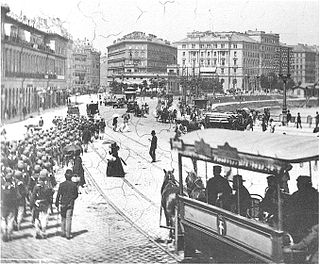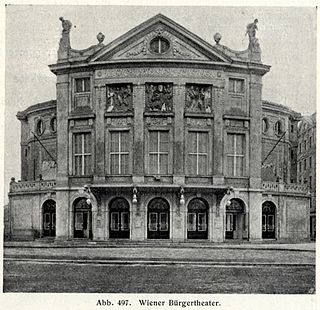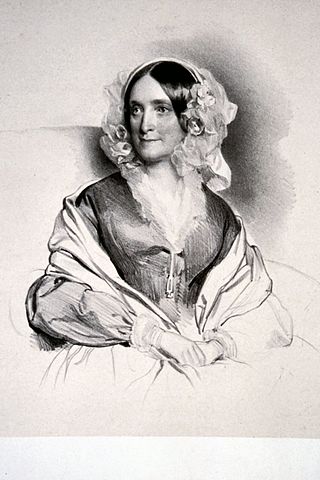Related Research Articles

The Austrian nobility is a status group that was officially abolished in 1919 after the fall of Austria-Hungary. The nobles are still part of Austrian society today, but they no longer retain any specific privileges. Austria's system of nobility was very similar to Germany's, as both countries were previously part of the Holy Roman Empire (962–1806).

Hotel Metropole was a hotel in Vienna, Austria that was constructed in 1871–73. It was destroyed during World War II after serving as the Vienna headquarters of the Gestapo from 1938. The address was Morzinplatz, in the I. District Innere Stadt.

Palais Rothschild refers to a number of palaces in Vienna, Austria, which were owned by members of the Austrian branch of the Rothschild banking family. Apart from their sheer size and elegance, they were famous for the huge collections of valuable paintings, statues, furniture, books and armour that they housed, another reflection of the family's vast wealth and prominent position.
Many of the thirteen children of Daniel Itzig and Miriam Wulff, and their descendants and spouses, had significant impact on both Jewish and German social and cultural history. Notable ones are set out below.

The Palais Toskana was a palace in Vienna.1

The Palais Lanckoroński was a palace in Vienna, Austria, located at Jacquingasse 16-18, in the Landstraße District. It was constructed in 1894-95 for Count Karol Lanckoroński and his family as a personal residence, and it housed the count's enormous art collection. The palace was built in a neo-baroque style by the theatre architects Ferdinand Fellner and Hermann Helmer. The building was three stories high, set back from the street, and protected by a wall with double gates. The entrance hall was wood panelled, two stories high, and decorated with portraits of the family. Other festive halls were decorated with frescoes and luxurious gobelin tapestries from the 17th century. Precious paintings, furniture and sculpture from different eras were arranged to form themed ensembles in the various rooms, with the rooms named to reflect the collection housed within. The palace was severely damaged in World War II, and was torn down in the 1960s.

Czartoryski-Schlössel was a palace called Weinhaus in the Währing district of Vienna, Austria. It was built in 1807 for the banker Friedrich Jakob van der Nüll, the legal, but not biological father of architect Eduard van der Nüll. The palace was subsequently put up for sale and purchased by Prince Czartoryski; it remained in possession of the Czartoryski family until shortly after World War I.

Schloß Pötzleinsdorf or Schloss Pötzleinsdorf is a former palace in Pötzleinsdorf, Vienna. It is currently being used as a primary school.
Palais Erdődy, also called the Palais Esterházy, was a palace in Vienna, Austria. It was commissioned by Prince Nikolaus Esterházy II in 1802 to be designed and built by Karl von Moreau.

Neudeggergasse Synagogue was a Jewish synagogue in Vienna, Austria.1 The synagogue served the Jewish community of the VII. and VIII. Districts . It was commissioned by Baron Moritz von Königswarter, and the architect was Max Fleischer.

Baroness Franziska "Fanny" von Arnstein, born Vögele Itzig, was a Viennese socialite and salonnière.

The Jewish Cemetery in Währing, opened in 1784, was the main burial site for members of the Israelitische Kultusgemeinde Wien. Besides the St. Marx Cemetery it is the last remaining cemetery of Vienna in the Biedermeier style. After its closure in the 1880s, it was partially destroyed during the time of the Third Reich, and is now only partly accessible due to its deteriorating condition. A long-running debate over the restoration of the cemetery has been taking place since 2006 between politicians of the federal and local levels as well as experts.

The Carltheater was a theatre in Vienna. It was in the suburbs in Leopoldstadt at Praterstraße 31.

The Bürgertheater was a theatre in Vienna.

Deborah Hertz, is an American historian whose specialties are modern German history, modern Jewish history and modern European women's history. Her current research focuses on the history of radical Jewish women.

The Palais Albert Rothschild was a palatial residence in Vienna, Austria. It was one of five Palais Rothschild in the city that were owned by members of the Rothschild banking family of Austria, a branch of the international Rothschild family. It was located at Heugasse 26, in the 4th (Wieden) district of Vienna. Commissioned by Baron Albert von Rothschild, it was designed and built by the French architect Gabriel-Hippolyte Destailleur between 1876 and 1884, and demolished in 1954.

The Palais Nathaniel Rothschild was a palatial residence in Vienna, Austria. It was one of five Palais Rothschild in the city that were owned by members of the Rothschild banking family of Austria.

Hilde Spiel was an Austrian writer and journalist who received numerous awards and honours.

Neue Menschen auf alter Erde: Eine Palästinafahrt is a 1925 travel book by Felix Salten, depicting his 1924 visit to Mandatory Palestine. Like his 1931 travel volume Fünf Minuten Amerika, also Neue Menschen auf alter Erde was first published as a series of feuilletons in a Vienna newspaper. Salten himself considered these two books to be his foremost.

Henriette von Pereira-Arnstein was an Austrian pianist and salon-holder.
References
- ↑ pg. 103, Dieter Klein, Martin Kupf, Robert Schediwy (Ed.) Stadtbildverluste Wien - Ein Rückblick auf fünf Jahrzehnte. LIT Verlag, Vienna 2005. ISBN 3-8258-7754-X
- ↑ pg. 103, Dieter Klein, Martin Kupf, Robert Schediwy (Ed.) Stadtbildverluste Wien - Ein Rückblick auf fünf Jahrzehnte. LIT Verlag, Vienna 2005.